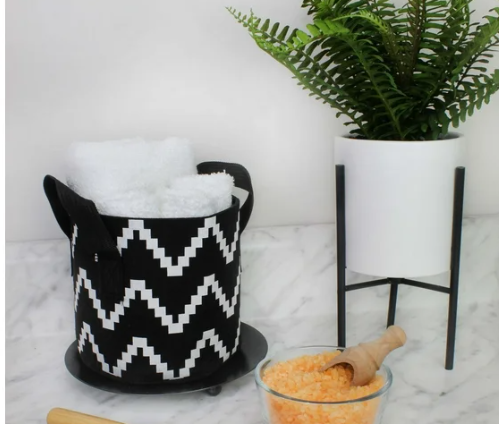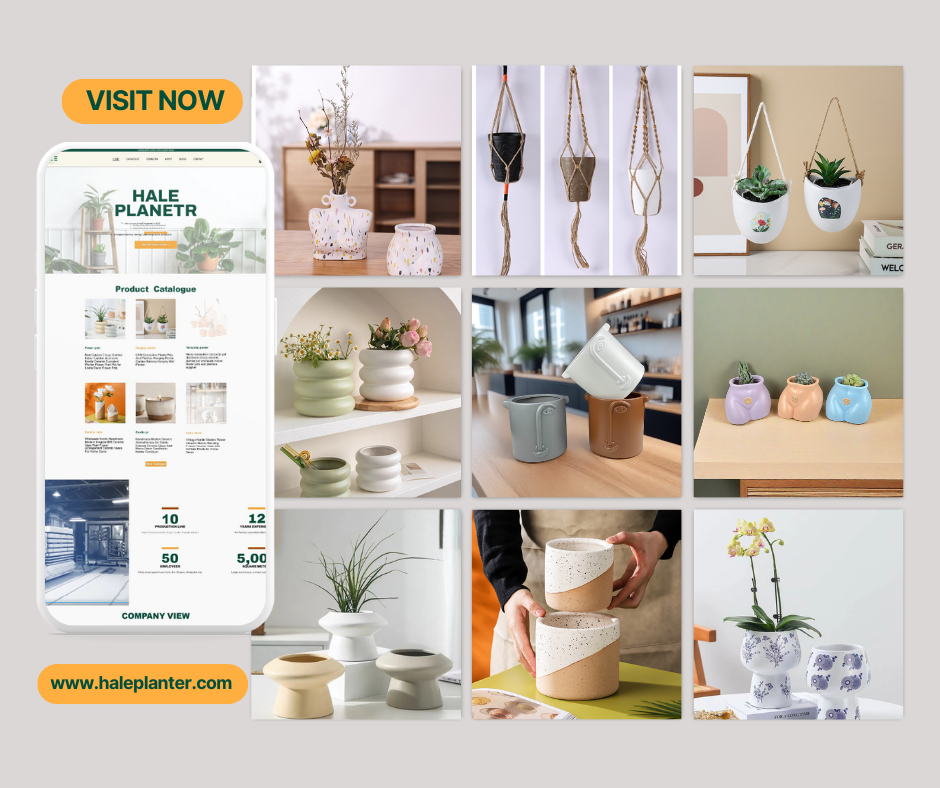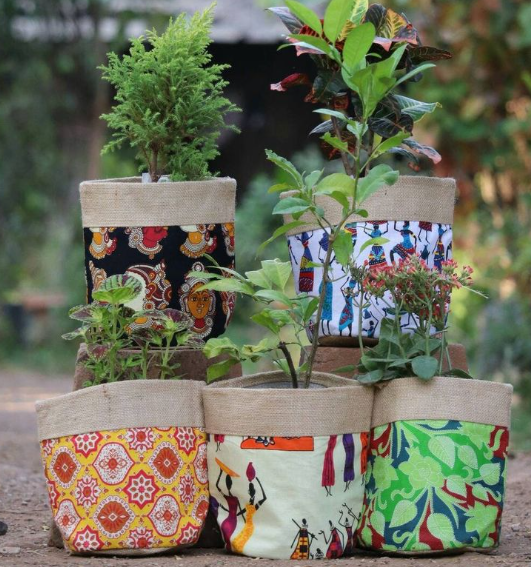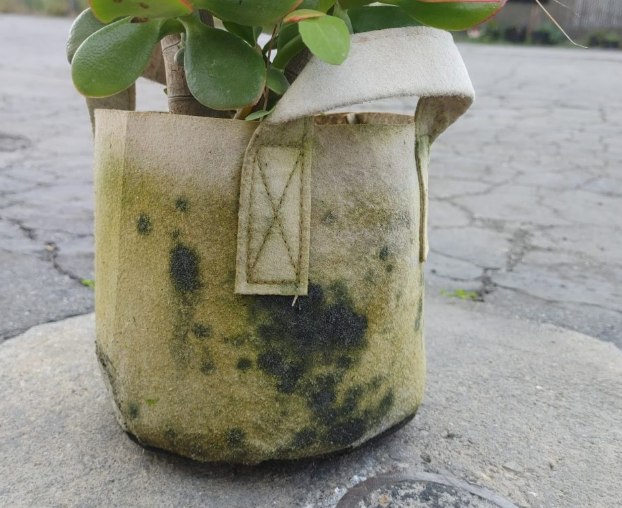A Comprehensive Guide for B2B Buyers
For businesses sourcing planters, whether for large-scale orders of ceramic or fabric planters, the decision between the two materials is not always straightforward. This decision should be based on a number of key factors, such as the type of plants being grown, the cost of the planters, their durability, and the overall aesthetics they offer. This article delves into an in-depth comparison of ceramic and fabric planters, providing insights to help B2B buyers, particularly those catering to large supermarket chains or smaller cross-border e-commerce businesses, make an informed decision on what works best for their customers.
The Importance of Planter Material for Plant Growth
The right planter can make all the difference in plant health, growth, and aesthetic appeal. Whether for indoor decorative plants, outdoor garden vegetables, or succulent arrangements, planters must provide the ideal environment for plant roots. Ceramic and fabric planters are two of the most popular options, each with its distinct set of advantages and challenges.
What’s the Role of Planters in Plant Growth?
Planters serve as more than just decorative pieces—they regulate factors like moisture retention, root health, and aeration. According to Braid and Wood, the material of the planter can significantly impact these factors. While ceramic pots are often seen as more aesthetically pleasing and durable, fabric pots provide excellent aeration and drainage for plants that require a highly oxygenated root system.
Understanding how these materials impact plant health is essential for any B2B buyer sourcing large volumes for their customers. In the following sections, we’ll break down the pros and cons of each material, offering insights into which types of plants they are best suited for and where they may fall short.

What Are Ceramic Planters?
Ceramic planters are made from clay that is fired in a kiln to produce a strong, hard surface. They are often glazed, which provides a smooth, shiny finish. Ceramic planters have been used for centuries due to their durability, aesthetic appeal, and ability to retain moisture effectively.
Advantages of Ceramic Planters

- Aesthetic Appeal: Ceramic planters are highly decorative and come in a wide variety of colors, shapes, and designs. These pots can elevate the appearance of any space, making them ideal for premium retailers and interior designers (Soltech).
- Durability: One of the biggest selling points of ceramic planters is their durability. They are made to last for many years when properly cared for, which makes them ideal for long-term use in both indoor and outdoor environments.
- Moisture Retention: Ceramic planters are ideal for plants that require a consistent level of moisture. Their thick walls retain water, reducing the frequency of watering required. This makes ceramic pots suitable for moisture-loving plants such as orchids and ferns.
- Temperature Insulation: The thickness of ceramic also provides a certain level of insulation. This can protect plant roots from temperature fluctuations, making them suitable for plants that are sensitive to changes in temperature.
Disadvantages of Ceramic Planters
- Heavy Weight: Ceramic planters can be heavy, especially for larger sizes, which makes them challenging to move. This could be a disadvantage for customers who prefer more lightweight options for their plants.
- Breakability: Although ceramic planters are durable, they are prone to breaking or cracking if dropped or exposed to extreme conditions. For businesses selling to areas with rough handling or extreme temperatures, this could be a drawback.
- Cost: Ceramic pots are generally more expensive than fabric alternatives, which can make them less appealing for budget-conscious buyers.
Best Plants for Ceramic Planters
Ceramic planters are best suited for ornamental plants, indoor plants, and those that prefer consistent moisture, such as orchids, succulents, and tropical plants. These plants benefit from the moisture retention and aesthetic appeal that ceramic pots provide.
What Are Fabric Planters?
Fabric planters, typically made from breathable materials like felt, polyester, or a mix of natural fibers, offer a modern alternative to traditional ceramic pots. These planters allow air and water to pass through the material, promoting healthy root growth and reducing the risk of root rot.

Advantages of Fabric Planters
- Root Health: Fabric planters are designed to encourage healthy root systems by allowing air to circulate around the roots. This results in better aeration, which prevents the roots from becoming waterlogged or developing rot (Fifth Season Gardening).
- Lightweight: Unlike ceramic pots, fabric planters are much lighter and more portable. This is an essential feature for businesses catering to customers who need to move plants frequently, such as for seasonal displays or indoor gardening.
- Affordability: Fabric planters are generally more affordable than ceramic planters, making them a good choice for B2B buyers seeking cost-effective solutions, especially when sourcing large quantities (ILGM Forum).
- Excellent Drainage: Fabric planters have superior drainage capabilities, which make them ideal for plants that thrive in well-drained soil. This includes vegetables, herbs, and flowering plants that require proper moisture control to prevent overwatering.
Disadvantages of Fabric Planters
- Aesthetic Limitations: While fabric planters are functional, they may not always provide the same aesthetic appeal as ceramic planters. For high-end retail environments, the utilitarian appearance of fabric pots may not align with customer expectations.
- Durability: Although fabric planters are durable for indoor and mild outdoor conditions, they are prone to wear and tear over time, especially when exposed to harsh weather or UV light.
- Less Temperature Insulation: Fabric planters do not offer the same level of temperature insulation as ceramic pots, which can lead to temperature fluctuations affecting the plant roots. This makes fabric planters less ideal for plants sensitive to extreme temperature changes.

Best Plants for Fabric Planters
Fabric planters are excellent for plants that require good root ventilation, such as vegetables, herbs, and other crops that need efficient drainage. They are also suitable for outdoor use, particularly in regions where drainage and air circulation are critical for plant health.
Comparing Ceramic and Fabric Planters
To help B2B buyers better understand the strengths and weaknesses of both ceramic and fabric planters, we’ve created a comparison table below.
| Factor | Ceramic Planters | Fabric Planters |
|---|---|---|
| Aesthetic Appeal | High-end, decorative, available in various finishes | Simple, functional, less decorative |
| Durability | Highly durable but prone to cracking under extreme conditions | Durable but susceptible to wear and tear over time |
| Weight | Heavy, difficult to move | Lightweight, easy to move |
| Moisture Retention | Retains moisture well, reducing watering frequency | Excellent drainage, prevents overwatering |
| Root Aeration | Limited aeration, risk of root rot if overwatered | Excellent aeration, promotes healthy roots |
| Cost | Higher cost, premium pricing | More affordable, cost-effective for bulk orders |
| Temperature Insulation | Good insulation, ideal for temperature-sensitive plants | Poor insulation, can lead to temperature fluctuations |
| Sustainability | Less eco-friendly, may not be recyclable | Often made from recycled or eco-friendly materials |
Which Planter Should You Choose for Your Customers?
For B2B buyers sourcing planters for large retail orders or smaller OEM projects, the decision between ceramic and fabric planters depends largely on the target market, plant type, and specific business goals.
- Ceramic Planters are ideal for high-end retail environments and businesses seeking to cater to customers who prioritize aesthetic appeal, durability, and moisture retention. They are best suited for decorative plants, such as orchids, succulents, and other indoor plants that thrive in consistent moisture conditions.
- Fabric Planters are a great choice for businesses looking for affordable, lightweight, and functional planters. They are perfect for customers growing vegetables, herbs, and other plants that require good root aeration and excellent drainage. Additionally, fabric pots are more cost-effective and eco-friendly, aligning with current sustainability trends.
By understanding the unique features of each material, B2B buyers can better serve their customers’ needs, whether they are sourcing for large-scale supermarket chains, small e-commerce stores, or niche garden retailers.

